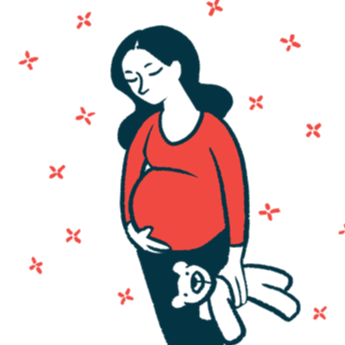Fertility rates about 2 times lower in women with MS: Study in Italy
Study stresses importance of patients being informed early about family planning
Written by |

While fertility rates in women with multiple sclerosis (MS) have been increasing over time, they remain about two times lower than in the general population, a study in Italy has found.
“There is a large gap in fertility between women with MS and the general population that needs to be addressed with appropriate family planning from the early stages of the disease,” researchers wrote.
They noted that certain disease-modifying therapies (DMTs) increased the chance of having babies with birth defects, and that breastfeeding was more likely to occur in women treated with breastfeeding-safe DMTs after pregnancy.
“DMT decisions should aim to achieve successful pregnancy, delivery and breastfeeding outcomes, while controlling disease activity,” researchers wrote.
The study, “Fertility, pregnancy and childbirth in women with multiple sclerosis: a population-based study from 2018 to 2020,” was published in the Journal of Neurology, Neurosurgery and Psychiatry.
MS more common in women than men
MS is a disease that can affect the brain and spinal cord, causing a wide range of symptoms, including numbness, tingling, difficulties walking, fatigue, and problems with vision.
The disease is more common in women than in men, occurring about three times as often. Many women are diagnosed with MS at an age when they can have children, and there remain questions about which treatment options are best for those who are planning to get pregnant.
To know more about pregnancy and childbirth for women with MS, a team of researchers drew on data from birth certificates issued in the Campania region of Italy from 2018 to 2020.
The researchers also looked at data on breastfeeding for up to six months after delivery, and how the use of DMTs may affect pregnancy, delivery, and breastfeeding.
Out of 2,748 women with MS in the Campania region who were of childbearing age (15-49 years old), 151 of them gave birth to 154 babies. The fertility rate for women with MS, or the number of live births per woman, was 0.58.
While previous studies have found that pregnancy rates in MS patients have increased in the past decades, consistent with a better knowledge of the effects of DMTs on pregnancy, fertility rates found in this study were still about two times lower than the 1.29 rate observed for women in the Campania region in the same period, and than the 1.25 rate for women in Italy as a whole.
Our research highlighted the importance of timely informing women with MS on family planning to fill or, at least, reduce the gap in fertility with the general population.
“Our population will be definitely reanalysed in the future to evaluate temporal trends, but, still, based on our results, the low rate of fertility could be due to a number of actionable factors, including late family planning, when compared with the general population, and concerns over disease control, with low utilisation of DMTs and subsequent risk of relapses,” the team wrote.
Among women with MS who were of childbearing age, patients who had given birth were on average three years younger (35.1 vs. 38.2 years). They also had taken DMTs for a shorter period of time (21 vs. 29.3 months), together suggesting these women were in earlier stages of the disease.
In total, 15 babies were born with low birth weight, meaning they were born weighing less than 2.5 kilograms (about 5.5 pounds). Five babies were also born with birth defects, one of whom died within one week of birth.
The majority of women (88.3%) were being treated with DMTs one year before getting pregnant. At the time of conception, about one-quarter (26.6%) were either untreated or had stopped taking their DMTs, and 50% of patients stopped receiving DMTs within three months after conception.
In contrast, about one-quarter (23.4%) continued to take their DMTs during pregnancy. These women were more likely to give birth to babies with low birth weight than women who stopped taking their DMTs either before conception or shortly after.
Some DMTs can affect pregnancy outcomes
If women were exposed to DMTs that could have negative effects on pregnancy or whose effects are not well-understood, they had an 8.88 higher chance of having babies with birth defects compared with women exposed to pregnancy-safe medications or not exposed to any DMTs during pregnancy.
Of note, birth defects occurred in babies born to women who had been exposed to dimethyl fumarate (sold as Tecfidera or generic forms; 2 of 21 pregnancies), fingolimod (sold as Gilenya or generics; 1 of 11 pregnancies), and Tysabri (natalizumab; 2 of 30 pregnancies).
After giving birth, 18.8% of women with MS switched their DMT to a more effective one, while about half (50.7%) continued taking the same or similar DMTs, and 30.5% did not receive any DMTs.
Most (90%) of the women breastfed, with 70% using breast milk exclusively to feed their babies for six months. Women who were treated with DMTs that were considered safe for breastfeeding were 5.57 times more likely to breastfeed their babies compared with those given therapies with unknown or negative effects on breastfeeding.
“Our research highlighted the importance of timely informing women with MS on family planning to fill or, at least, reduce the gap in fertility with the general population,” the researchers concluded.
“Timely and up-to-date information on conception, pregnancy, delivery and breastfeeding should be provided to women with MS for fully-informed decision-making process, including preferring or switching to alternate DMTs,” they added.







